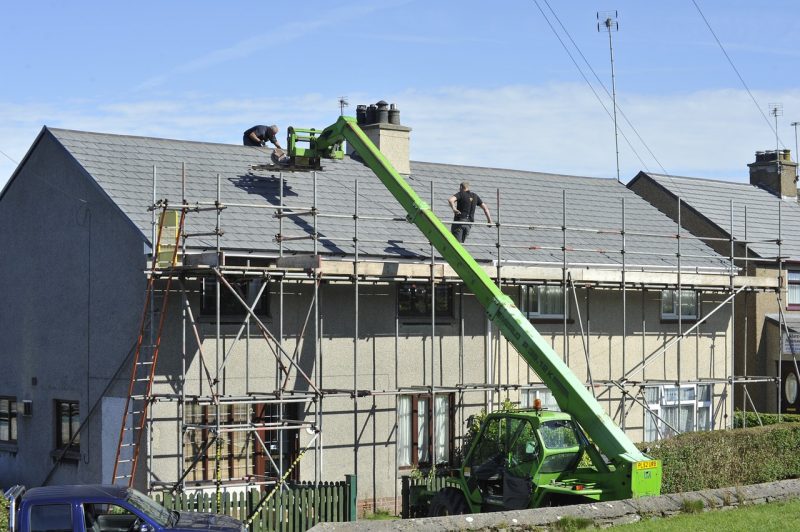Repairing the flashing
This might not be the first thing that pops into your head, but a fair number of times it is the flashing, not the shingles themselves, that needs repair. You can learn more about types of flashing and what purpose it actually serves in this article. If damaged, it causes or promotes leaks and other problems.
Moreover, whenever you replace some or all of your roof, you ought to check up on the flashing as a part of the repair session, since you have a good opportunity at the time. Pay close attention to the areas with gaps in the roof, like skylights, around chimneys, trapdoors to attics and what else have you.
Replacing the shingles
This is what you do when the problem is focused in one or two smaller areas of your roof. Shingles get damaged or misplaced – for example, they can get chipped or dented from being beaten by hail, or they can get torn out by strong wind. When only a few are the issue, you can replace just those individual pieces.
The trick is to match the style and color of the new shingles to all the old ones. Badly matched patches stick out like a sore thumb, and then you can kiss curb appeal and potential buyers goodbye.
When you remove the damaged shingles, check the immediately surrounding ones too. If they are loose, tear them off – better be safe than sorry. Use nails and a mix of appropriate adhesives to keep the new ones firmly in place.
Re-roofing part-way

Sometimes you need to remove your roof, but not all of it. If only one area of the roof is damaged, you can remove all the shingles there and place new ones, while keeping the rest of the original roof relatively intact. You can read an awesome step-by-step to reroofing in this guide: https://www.wikihow.com/Reroof-Your-House
Another option here is to add a layer of new shingles over the entire roof. This is an awesome way to conceal any mismatched patches you might have up there. However, layering is a one-hit wonder. If you had already done it, you will have to get rid of both layers completely.
Otherwise, after a layer is removed, the new shingles may not align right with the other roof sections. You can get weird lines that look unattractive, or the ridge cap will grow a hump. So, if a large area of shingles is damaged or gone, but the rest are fine, partial re-roofing can be an awesome fix – just be really careful with the aesthetic alignment.
Re-roofing all the way
In contrast to the above type of roof repair, total roof replacement is the single inevitable prospect for all homeowners. Even if there is no damage to your roof, or at least no widespread damage, they still have their own life expectancy.
When a roof nears its age limit, it has to be replaced entirely. This can be done by layering, or by removing all the shingles before placing new ones. New shingles provide better coverage and adhere to the roof better.
Why not wing the little stuff?
Reroofing and other big jobs are best left to the pros. However, according to our friends over at MainStreet Roofing, no contractor will frown at you if you take a proactive DIY approach to the minor stuff. Here are some tips for being successful in it:
Roofing adhesive and caulk are awesome for flattening down curled shingles and sticking their edges to the roof properly. If they are brittle, treat them with a heat gun to make them softer and less likely to break. Similarly, use roof cement to fill the areas around your flashing (especially the joints), to ensure watertight sealing.
If any single shingle is loose, bin it and install a replacement. No need to wait till it falls off! Slide the back edges underneath the previous row, and make sure the front edges on either sideline up precisely. Secure them with galvanized roofing nails, seal the nails with roof cement, and spread some of it underneath the rest of each single shingle too.
















